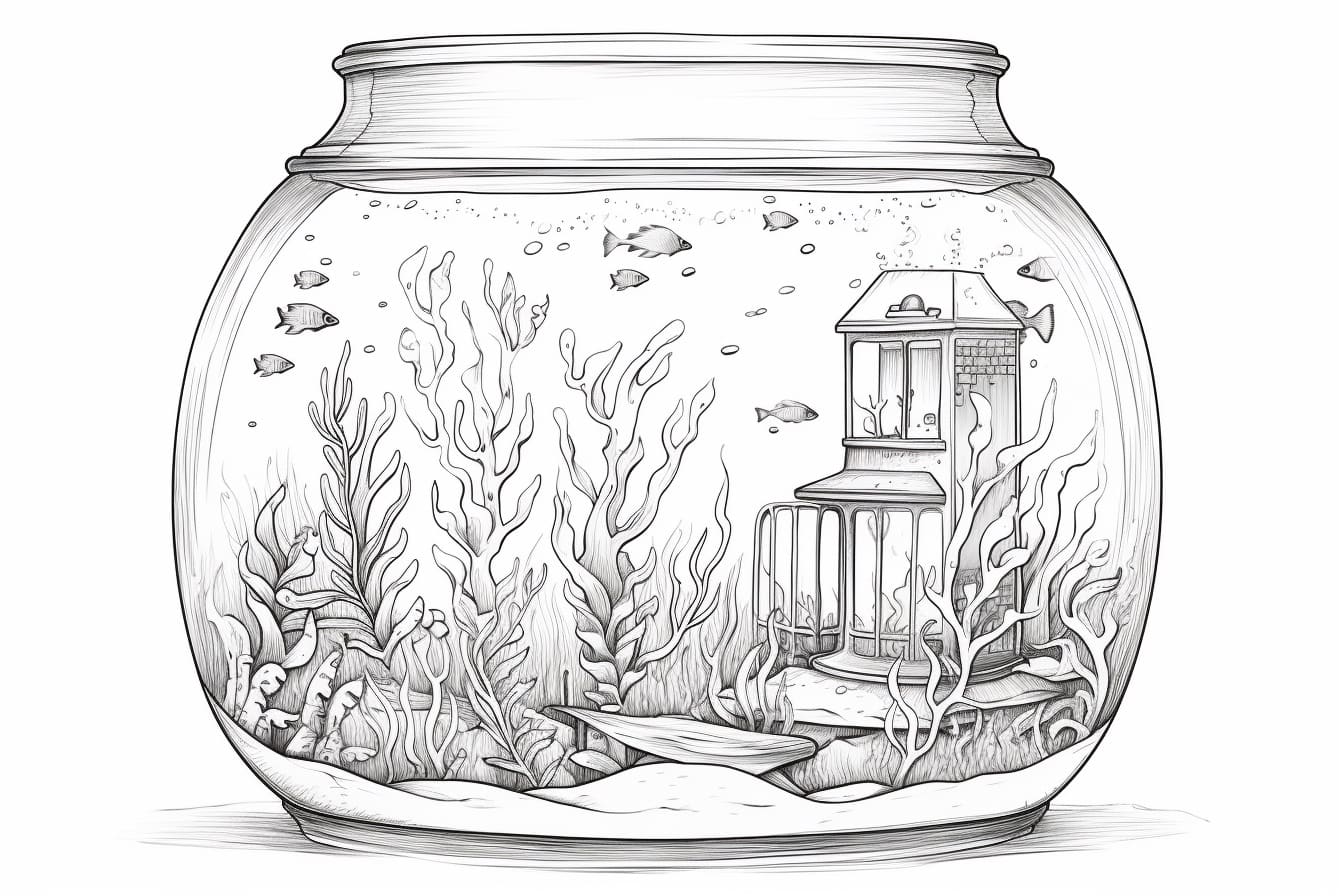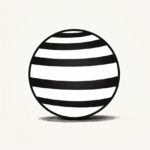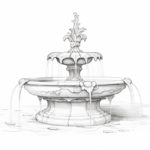Drawing aquariums can be a captivating and immersive experience, allowing artists to explore the vibrant colors, intricate patterns, and unique shapes of aquatic life. From graceful fish gliding through the water to delicate coral swaying in the currents, aquariums offer a diverse array of subjects to inspire your artistic creations. In this guide, we will delve into the techniques and tips for capturing the beauty and serenity of aquariums on paper. Whether you are a beginner looking to enhance your drawing skills or an experienced artist seeking a new challenge, diving into the world of aquarium drawing promises a rewarding and enriching artistic journey. Join me as we embark on a creative exploration of the mesmerizing underwater world through the art of drawing aquariums.
Materials Required
To draw an aquarium, you will need the following materials:
- Drawing paper or sketchbook
- Pencils (various grades for shading)
- Eraser
- Ruler (for straight lines)
- Compass (for drawing circles or curves)
- Colored pencils or markers (optional, for adding color)
- Reference images of aquariums or fish (for inspiration and accuracy)
With these materials, you can create a detailed and realistic drawing of an aquarium. Remember to take your time and pay attention to details to make your drawing come to life.
How to Draw an Aquarium: a Step-by-step Guide
Step 1: Start with the Basic Shape of the Aquarium
- Draw a large rectangle to represent the front panel of the aquarium. This will be the main shape of the aquarium.
- Add two smaller rectangles on the sides of the large rectangle to represent the side panels of the aquarium.
- Connect the top and bottom of the front panel to the side panels with straight lines to complete the basic shape of the aquarium.
Step 2: Add Detail to the Aquarium
- Draw a smaller rectangle inside the front panel to create the glass or acrylic thickness of the aquarium.
- Add a horizontal line slightly above the bottom of the front panel to represent the substrate or ground inside the aquarium.
- Draw a few vertical lines inside the aquarium to represent the background decor, such as plants or rocks.
Step 3: Add Water and Fish
- Sketch a wavy line at the top of the front panel to represent the water level in the aquarium.
- Draw various fish shapes swimming inside the aquarium. You can include different types of fish, such as goldfish, angelfish, or guppies.
- Add some aquatic plants and decorations inside the aquarium to make it look more realistic.
Step 4: Refine Details and Add Shading
- Go over your drawing and refine any details, such as adding more texture to the substrate or adding more plants and decorations.
- Use shading techniques, such as hatching or stippling, to create depth and dimension in your drawing. Shade darker areas where the light doesn’t hit as much, such as under the substrate or behind the fish.
Step 5: Add Final Touches
- Erase any unnecessary guidelines and clean up your drawing.
- Add highlights to the glass or acrylic of the aquarium to make it look shiny and reflective.
- Consider adding a light source to your drawing to create realistic lighting effects on the aquarium and its inhabitants.
Step 6: Optional – Color Your Drawing
- Use colored pencils, markers, or watercolors to add color to your aquarium drawing.
- Consider using different shades of blue and green for the water, vibrant colors for the fish, and various shades of green for the plants.
- Blend colors smoothly and add highlights and shadows to create a more realistic and vibrant look to your aquarium drawing.
Remember to take your time with each step and practice regularly to improve your drawing skills. Have fun and get creative with your aquarium drawing!
Conclusion
In conclusion, drawing an aquarium can be a rewarding and enjoyable experience for artists of all levels. By following the steps outlined in this article and practicing regularly, you can create a vibrant and realistic depiction of an underwater world. Remember to pay attention to details, use a variety of shading techniques, and have fun experimenting with different textures and colors. With patience and dedication, you can bring your aquarium drawing to life and showcase your artistic skills for all to admire.
Fun Facts About Aquariums
- The first public aquarium opened in 1853 at the London Zoo, showcasing marine species.
- The world’s largest aquarium is the Georgia Aquarium in Atlanta, USA, which holds more than 10 million gallons of water.
- Some aquariums have interactive touch tanks where visitors can touch and feel marine animals like starfish and sea urchins.
- The practice of keeping fish in glass containers dates back to ancient Rome, where they kept fish in glass jars.
- Jellyfish are some of the oldest living creatures on Earth and can be found in many aquariums around the world.
- The Monterey Bay Aquarium in California was the first to successfully exhibit a great white shark in captivity.
- Some aquariums have special programs for visitors to scuba dive or snorkel in the tanks with the marine life.
- The Dubai Mall Aquarium in the United Arab Emirates features a massive acrylic panel that holds the Guinness World Record for the largest single acrylic viewing panel.
- Many aquariums participate in conservation efforts, such as breeding endangered species and promoting sustainable practices.
- Some aquariums host sleepovers where guests can spend the night surrounded by marine life and learn about nighttime behaviors of the animals.
Suggestions for Scenes and Settings for Aquarium Drawings
Certainly! Here are some suggestions for scenes and settings you can draw at an aquarium:
- Underwater Tunnel: Show the perspective of walking through a tunnel with fish swimming all around and above you.
- Jellyfish Exhibit: Capture the ethereal beauty of jellyfish floating gracefully in a tank, with their translucent bodies and trailing tentacles.
- Coral Reef: Illustrate a vibrant and colorful coral reef teeming with a variety of marine life, such as fish, sea anemones, and seahorses.
- Shark Tank: Convey the awe-inspiring presence of sharks gliding through the water with their sleek bodies and sharp teeth.
- Touch Tank: Depict children and adults reaching into a touch tank to interact with sea creatures like starfish, sea cucumbers, and hermit crabs.
- Penguin Habitat: Show adorable penguins waddling on land and diving gracefully in the water, surrounded by icy rocks and a chilly environment.
- Sea Otter Enclosure: Illustrate playful sea otters floating on their backs, cracking open shells, and grooming each other in a cozy aquatic habitat.
- Kelp Forest: Draw the towering kelp plants swaying gently in the water, providing a home for various fish, sea lions, and other marine animals.
- Octopus Tank: Highlight the intelligence and camouflage abilities of an octopus as it changes colors and moves through its tank.
- Coral Restoration Area: Show divers working to restore damaged coral reefs by planting new coral fragments and monitoring their growth.
Remember to pay attention to details such as lighting, reflections, and the interactions between different species to bring your aquarium scenes to life!









